Raised pavement markers come in a variety of reflective colors, some of which (like white and yellow) have guessable meanings borrowed from painted road line conventions. But there are other colors to (like blues and greens) that relay more information to those in the know.
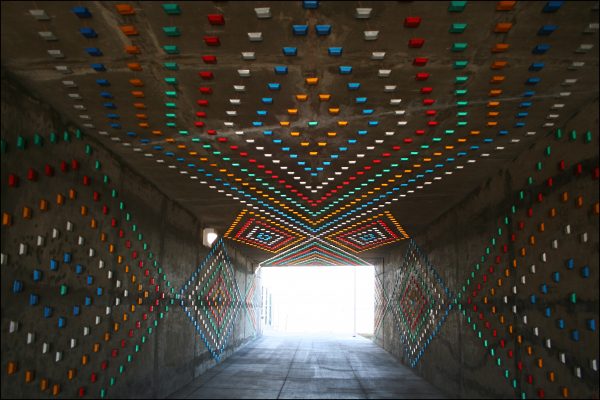
Some colors cue police officers, emergency personnel or maintenance workers, showing them where they can find things like pull-offs, fire hydrants or stop valves. A few variants even feature reversible colors, conveying different messages based on direction of travel. But these meanings — like reflector designs — vary from place to place.
Cat’s Eyes in the U.K., Europe & Hong Kong
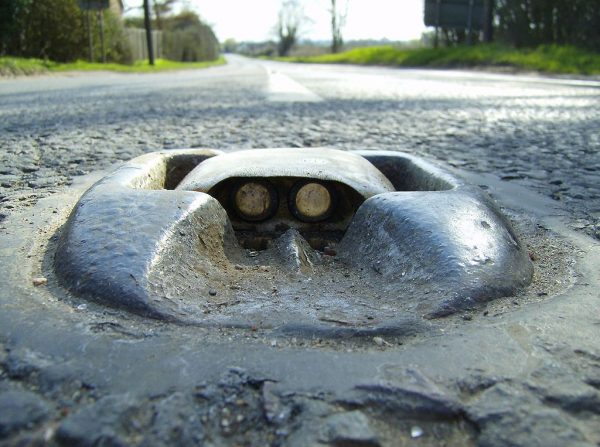
The Cat’s Eye was invented in 1933 by Percy Shaw of Boothtown, a suburb of Halifax, England. It features reflective glass spheres set inside a rubber and cast-iron housing. Each unit is complex and dynamic, its various materials engineered to serve a variety of clever functions.
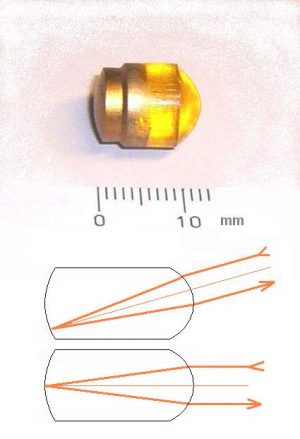
The metal part of the housing protects the device while creating an audible sound when a car passes over, like Botts’ Dots. Meanwhile, a fixed rubber wiper clears off the glass when it is pushed under the road. The Cat’s Eye is also retroflective, meaning: it redirects light back toward its source with minimum scattering, optimizing visibility for cars in motion. Today, some newer versions of Cat’s Eyes are solar-powered, gathering energy that is then used to fuel an LED light (in place of the old retroflective glass eye).
Over time, different colors have evolved for different purposes as well. The uses are standardized across most of Europe:
- White: used in the center of a road, marking lanes and islands
- Yellow: along the edge of the central reservation (median)
- Red: along the hard shoulder of motorways
- Blue: emergency vehicle lay-bys (aka pull-offs) and slip roads, mainly for police to park and monitor passing traffic
- Green: joining or leaving slip roads at junctions, entrances and exits – sometimes used to mark minor side roads
Cat’s Eyes are popular in the U.K., perhaps in part because they work so well in fog, but they are not the only solution in the world. A simpler trapezoidal design can be found in many places. But specific color-coded meanings differ from place to place, especially when it comes to the less-common colors and reversible variants.
Reflectors in the U.S., Canada & Australia
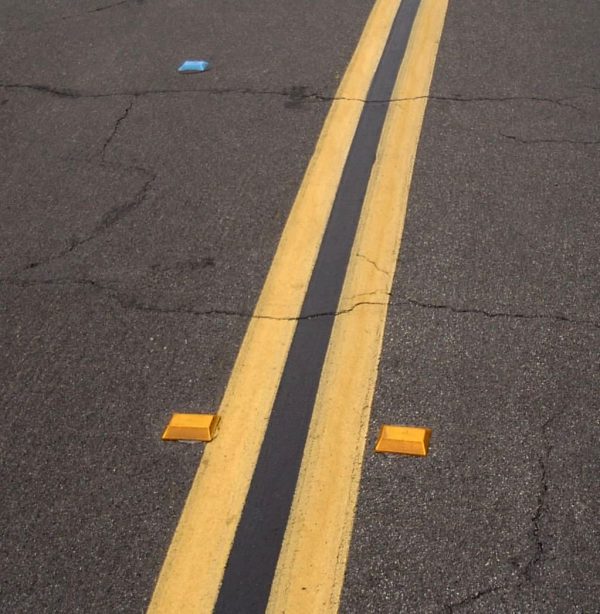
A decade or so after Cat’s Eyes hit the streets of Europe, other raised pavement markers began appearing in the United States. Many current models still in use are based on designs by engineer Sidney A. Heenan, who worked at the Stimsonite Corporation in Niles, Illinois. His marker was patented in 1967 then improved upon by Ramon J. Ascencio, who added a protective coating to improve impact and abrasion resistance. The brand has changed hands over time but is still in business.
Stimsonsite raised retroflectors, images by Bidgee and Coolcaesar (CC BY-SA 3.0)
Their raised reflective markers typically feature a pair of small ramps, one facing toward and one away from oncoming traffic. And while each is reflective and most of the shapes are the same, different color schemes communicate different things to drivers. In North America:
- White: lane markings or pavement edges
- Yellow: separating opposite-direction lanes, far sides of one-ways
- Red: closed to traffic (wrong way)
- Blue: roadside fire hydrant
- Green: entry to gated community available for emergency vehicles
- White (or Yellow or Clear) + Red: the red, visible only from one direction, indicates “wrong way” or “do not enter”
- White + Black: white to mark HOV lane restrictions in reversible lanes, black to blend in when the markings do not apply
In Australia, European conventions dominate, though (as in the U.S.) blue is used to indicate the presence of a fire hydrant. Yellow also has an extra function in Victoria: broken yellow lines with yellow reflectors indicate tram tracks on which other vehicles may drive. Solid lines and double-yellow reflector sets, meanwhile, tell drivers not to cross tracks.
Raised pavement markers have found other uses as well, from art installations to rural roads, hunting paths and private drives. And while Botts’ Dots are being phased out in places like California, the road ahead looks bright for other marker designs.
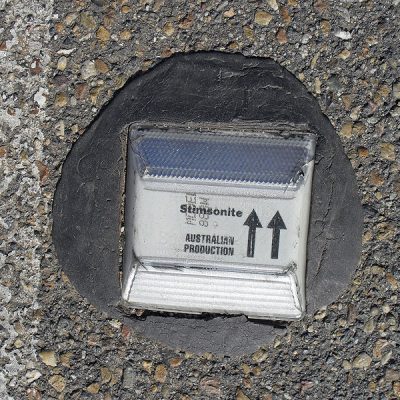
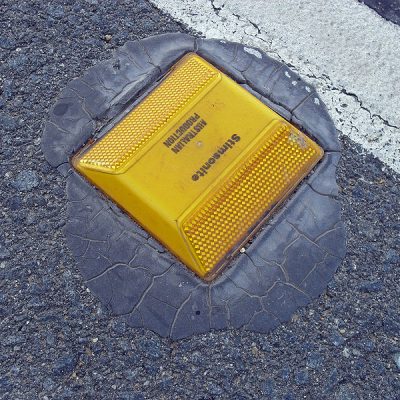
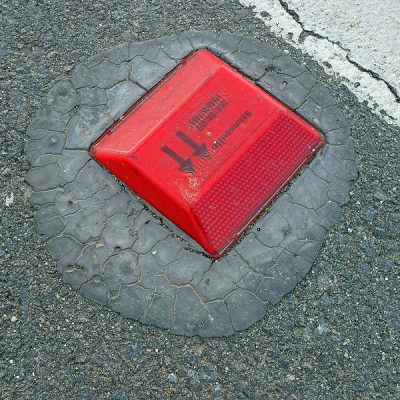
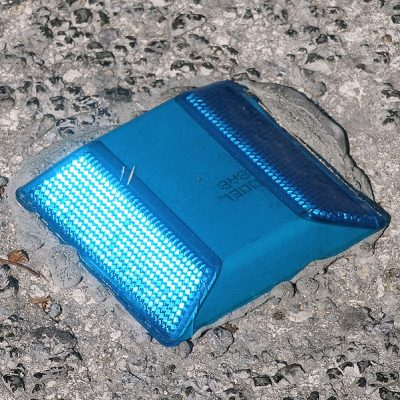



Comments (3)
Share
It’s worth noting that in Canada, and I’m sure the northern States, that road reflectors are recessed to be flush with the road surface in order to survive decapitation by snow plows.
That is mentioned in the Bott’s Dots article: http://99percentinvisible.org/article/end-road-botts-dots-round-markers-phased-california/
nice detail! love those things which makes driving at night way more fun! Also in Japan and China some road reflectors blink with LED lights at night and they make the highway look like a runway with landing lights!